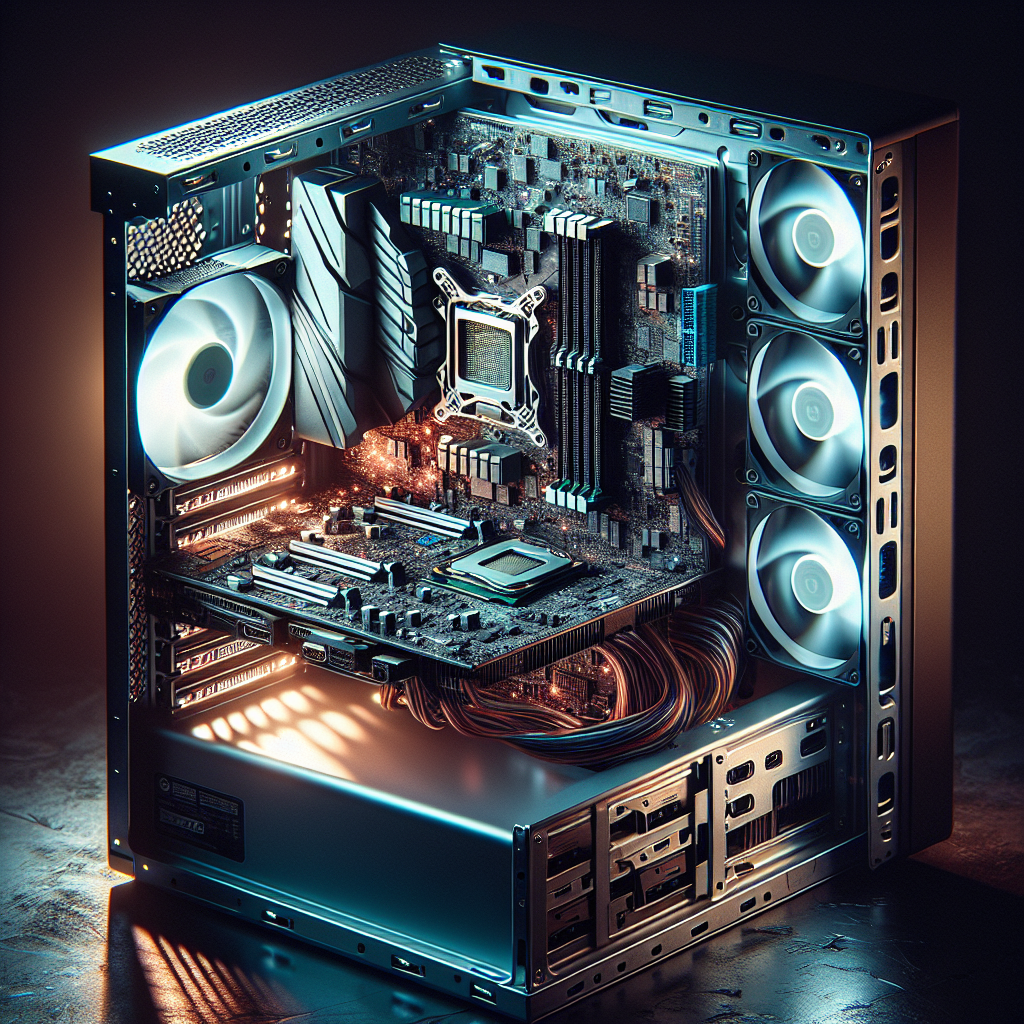When it comes to building gaming PCs, enthusiasts are always on the lookout for ways to maximize performance. One such method is the use of dual-socket motherboards, which can provide a significant boost to processing power and overall system performance. But why exactly are some gaming PCs built with dual-socket motherboards? In this article, we will delve into the reasons behind this choice and explore the benefits it brings.
What Are Dual-Socket Motherboards?
A dual-socket motherboard is a type of mainboard that can accommodate two central processing units (CPUs) instead of the usual one. This configuration is often found in servers and workstations but is increasingly being adopted in high-end gaming PCs. Here is a comparison of single-socket and dual-socket motherboards:
| Feature | Single-Socket Motherboard | Dual-Socket Motherboard |
|---|---|---|
| Number of CPUs | One | Two |
| Processing Power | Single CPU Performance | Combined CPU Performance |
| Cost | Generally Lower | Higher |
| Use Cases | Standard Computing | High-End Gaming, Workstations |
Increased Processing Power
One of the most apparent advantages of a dual-socket motherboard is the increased processing power. With two CPUs, a gaming PC can handle more tasks simultaneously, which is crucial for running demanding games and applications. This allows for smoother gameplay and faster load times.
Especially in games that are optimized for multi-core processing, a dual-socket setup can offer a noticeable performance boost. It also helps in other resource-intensive tasks such as video editing, 3D rendering, and running virtual machines.
Enhanced Multitasking
Another significant benefit of dual-socket motherboards is enhanced multitasking capability. Modern games often require a lot of background processes such as game updates, chat applications, and streaming software. Having two CPUs can effectively manage these processes without impacting the gaming performance.
Furthermore, if you are a content creator who streams gameplay while recording or editing videos, a dual-socket system can handle these tasks more efficiently. This setup ensures that your gaming experience remains smooth while all these auxiliary tasks run seamlessly.
Improved System Performance
Overall system performance can see a considerable improvement with a dual-socket motherboard. This is not limited to gaming alone; general system operations like boot times, application launches, and file transfers can become noticeably faster.
In addition to the raw processing power, dual-socket motherboards often come with additional features such as more memory slots and higher bandwidth for data transfer. These enhancements contribute to a more responsive and efficient system.
Better Future-Proofing
Investing in a dual-socket motherboard can be seen as a way to future-proof your gaming PC. As games and applications become more demanding, having the extra processing power from two CPUs ensures that your system stays relevant longer without the need for frequent upgrades.
With technology advancing rapidly, more applications are being designed to take advantage of multiple cores and threads. A dual-socket motherboard allows you to stay ahead of the curve by offering the necessary hardware to support these advancements.
Use Cases Beyond Gaming
While gaming is a primary focus for many, dual-socket motherboards also excel in other demanding use cases. For instance:
- Workstations: Ideal for professionals in fields like 3D modeling, animation, and scientific computing.
- Servers: Useful in home or small-business server setups where multitasking and reliability are crucial.
- Content Creation: Beneficial for video editing, rendering, and streaming, providing the power to handle multiple tasks simultaneously.
Considerations and Drawbacks
Despite the many advantages, there are also some considerations and potential drawbacks to a dual-socket setup. These include:
- Cost: Dual-socket motherboards and the additional CPU can be significantly more expensive than their single-socket counterparts.
- Power Consumption: More CPUs mean higher power consumption, which can lead to increased electricity bills and the need for robust cooling solutions.
- Complexity: Building and maintaining a dual-socket system can be more complex, requiring more knowledge and experience in PC building and troubleshooting.
Conclusion
In conclusion, dual-socket motherboards offer remarkable advantages for gaming PCs by providing increased processing power, enhanced multitasking, and overall system performance improvements. While there are considerations such as cost and complexity, the benefits often outweigh the drawbacks for enthusiasts looking to maximize their gaming experience and future-proof their systems.
Whether you are a gamer, content creator, or professional, understanding the potential of dual-socket motherboards can help you make an informed decision about your next PC build. Embracing this advanced technology could be the key to achieving unparalleled performance and efficiency in your computing tasks.
